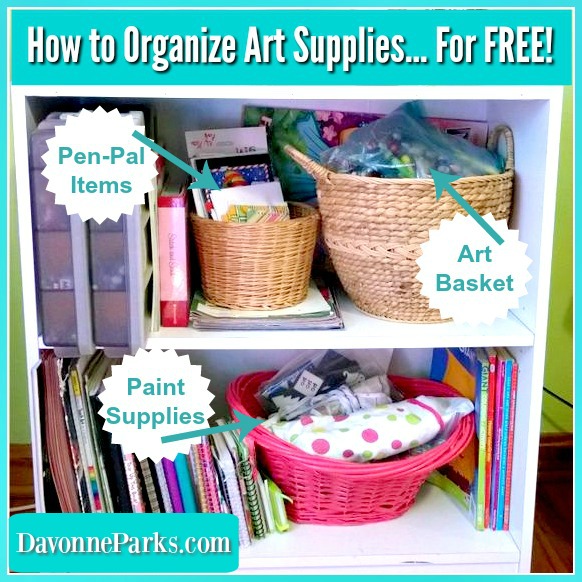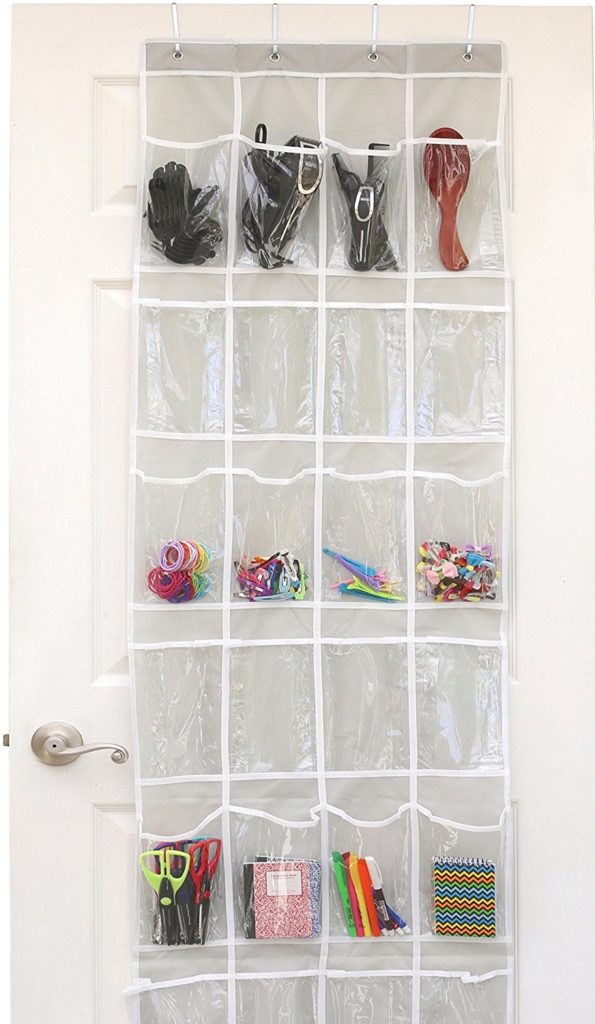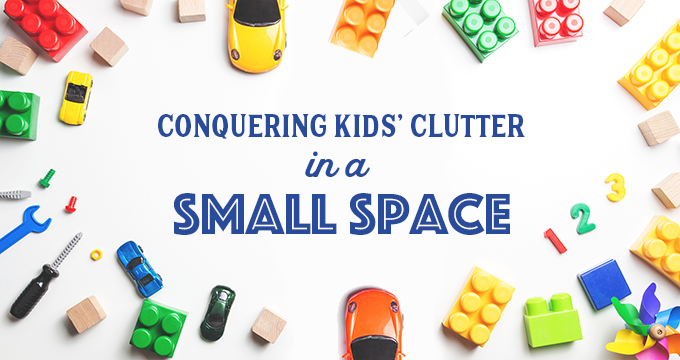
Special Note: This article is part of an intentional home series by Davonne Parks, author of Chaos to Clutter-Free. To view the rest of the articles in this series, go here.
![]()
Many of us have a tendency to think that if we get rid of our children’s possessions, then we’re not honoring their work on a project or their enjoyment of a particular toy. We may worry someone will be upset with a choice we made, or that we might need an item in the future. So we hold onto things.
But, really, when we sort through our children’s belongings and choose what to keep, we’re honoring their space, their time, and their creativity, as well as teaching them important life skills.
Keep in mind that organizing kid items can take some time, so try not to get discouraged if you’re not completing tasks as quickly as you hope.
When you do sort through your children’s belongings, I recommend pulling everything out of one small space. For example, take everything out of a toy box. Then, select the items you’re going to keep and put those back in the toy box. Everything else that’s left on the floor should be tossed or donated.
How To Choose What To Keep:
1. Think about playtime vs. clean-up time.
If your children spend 10 minutes playing with something and it makes for an hour’s worth of cleanup, the toy is probably more work than it’s worth. Get rid of it.
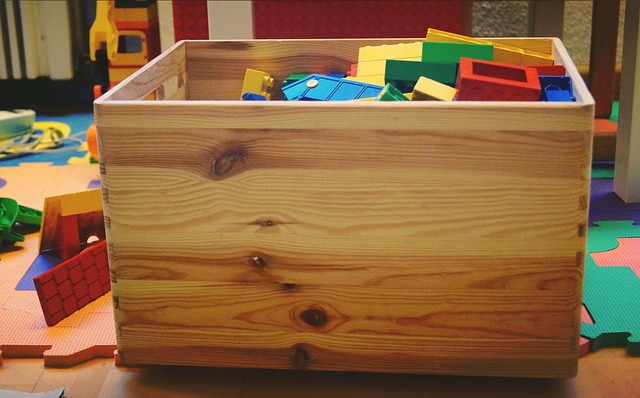
2. If it’s broken, get rid of it.
Free yourself from the dozens of things you’ll fix “soon.” Just throw it into the trash. Let it go.
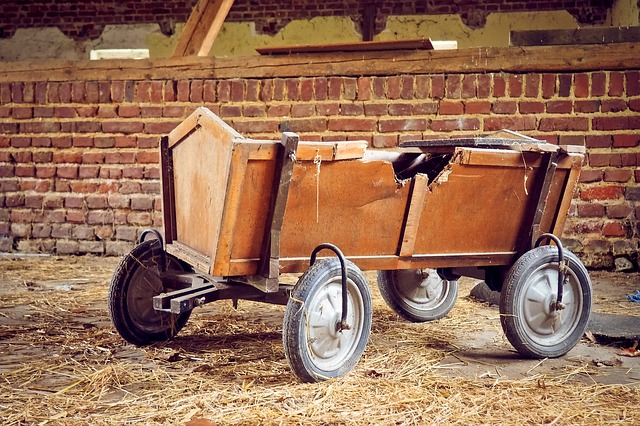
3. If it has missing pieces, use your best judgment.
You could designate a “missing pieces” box for now, and see if you come across the pieces while you’re decluttering your house. If you don’t find the pieces within the next month or so, get rid of the toy.
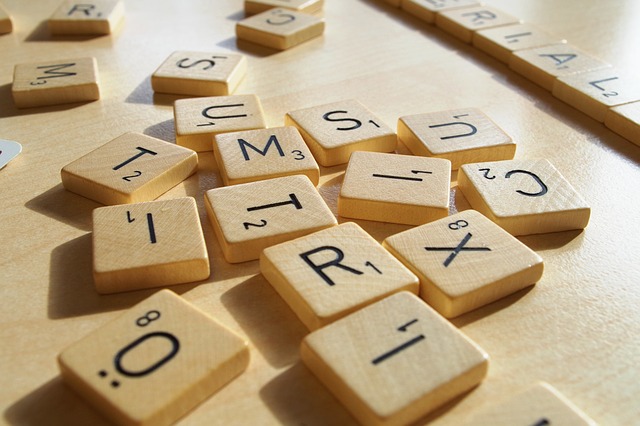
4. Set limits.
When the bookshelf is full, it’s full. Don’t cram books—get rid of some instead. Likewise, when the toy box is full, it’s full. Don’t let your kids keep stuff next to the toy box. Instead, get rid of the things that aren’t the top favorites so everything can fit neatly into the designated space.
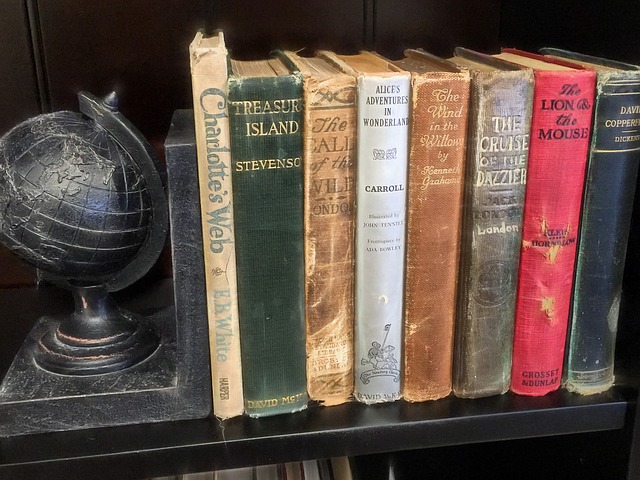
5. If they probably won’t miss it, donate it.
Sometimes a child enjoys and uses many toys regularly, so simply asking how often they use it isn’t always enough. There are plenty of times when kids become interested in playing with a toy only when they rediscover it in the bottom of their toy box. The better question is, “Will my child really even miss this if it is gone?”
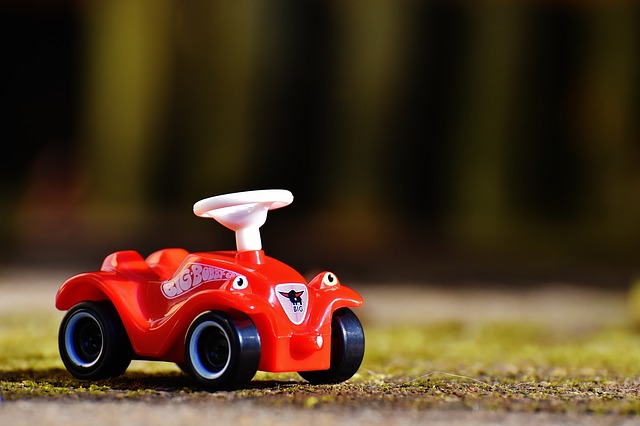
6. If you’re holding onto an item for a younger sibling, give it away.
Necessary items like cribs and car seats don’t count, of course. But, if you’re holding onto Johnny’s toy or Suzie’s doll for Betsy to grow into, then go ahead and donate it!
This may seem wasteful at first, but think about the plethora of items that likely come into your house every single birthday and Christmas. Little Betsy will receive plenty of new toys to play with, without Johnny’s old items taking up space.
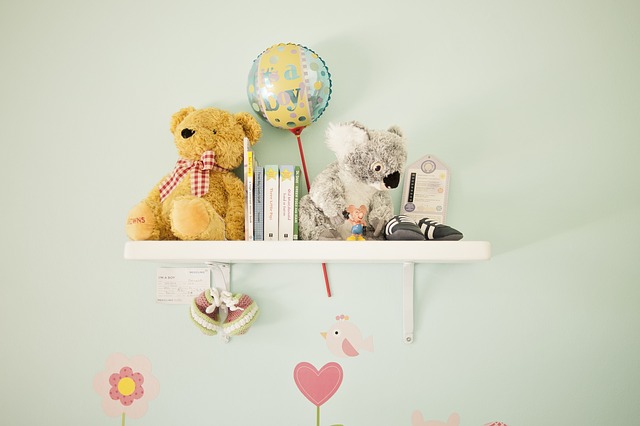
Tips for Organizing The Things You’re Keeping:
1. Use zip-top bags for organization.
This is not the prettiest storage method, but it’s cheap and efficient. You can put Legos into gallon-size bags if your kids don’t have very many of them (otherwise use a tote box). Lacing games or finger puppets can go into another. Divide art supplies into yet another bag.
Real-life example: On our art shelf is an art supply basket. Inside that basket is a bag for crayons, another bag for colored pencils, another bag for stencils and stickers, another for scissors, and so on. This way, my kids can grab supplies quickly on their own as well as put them back easily.
2. Utilize over-the-door clear shoe organizers.
In addition to holding shoes, clear over-the-door shoe organizers (affil link) are great for keeping art supplies and other small items organized!
3. Take the time to find a good system for your family.
For my family, we generally need to declutter our schoolroom (which doubles as a playroom) twice a year. This takes anywhere from two hours to a solid day to accomplish each time, but doing so keeps the room under control in between declutter sessions.
I encourage you to try regular decluttering sessions in your child’s own areas to see if that helps.
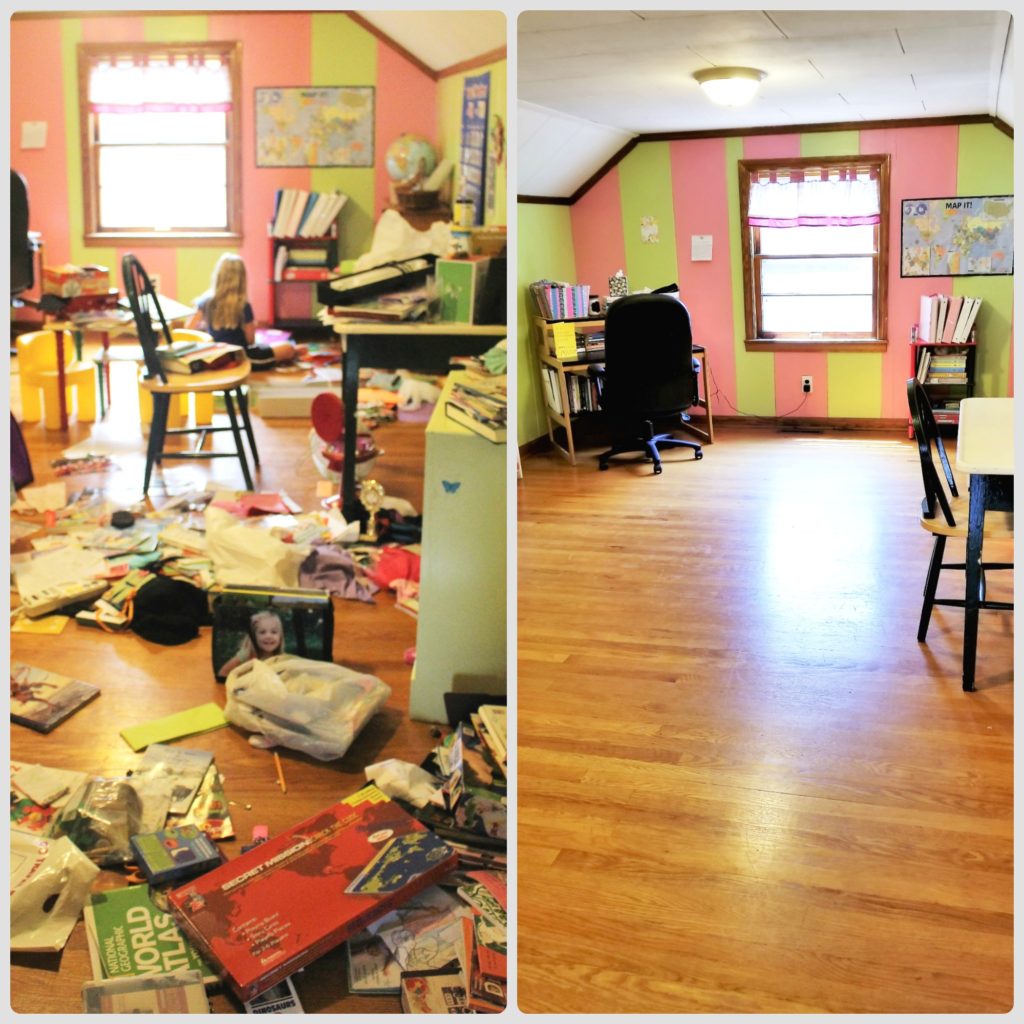
When Your Kids Want Something Back That You’ve Donated:
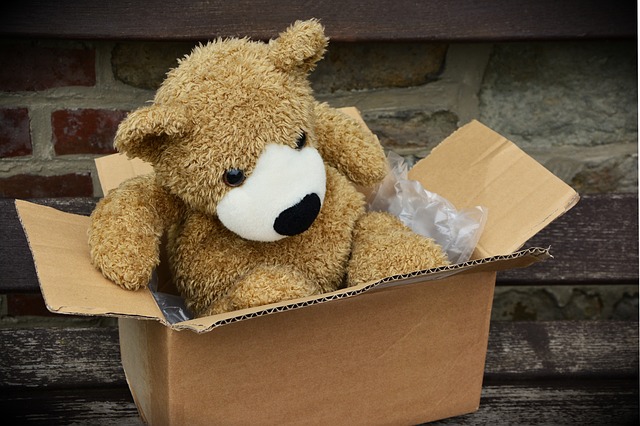
As much as I’d love to pretend it’s never going to happen to you, the reality is there’s a possibility your child may want to play with something you’ve donated.
Do not, I repeat, do not let a fear of this stop you from having an organized home!
“For God has not given us a spirit of fear, but of power and of love and of a sound mind.” 2 Timothy 1:7, NKJV
In all the dozens and dozens of van-loads full of items my family has donated over the past several years, there have only been three items in those bags that my children have missed.
Here’s how to handle those situations:
1. Give yourself grace.
Realize that it’s okay to not do everything perfectly.

2. Remind your children that you’ve thrown some items away because most of the pieces were missing.
They will generally understand that keeping things clutter-free allows them to now have toys with little pieces that aren’t getting lost all over the place.
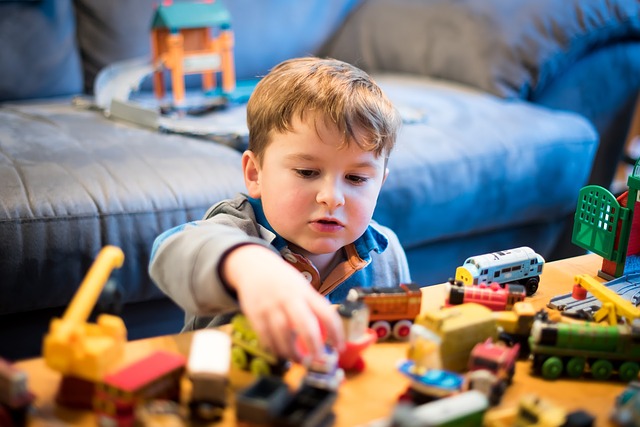
3. Encourage them to get creative.
Your kids may be able to figure out how to create their own version with supplies you have on hand. And, who knows – maybe they’ll even like their homemade version better than the original!
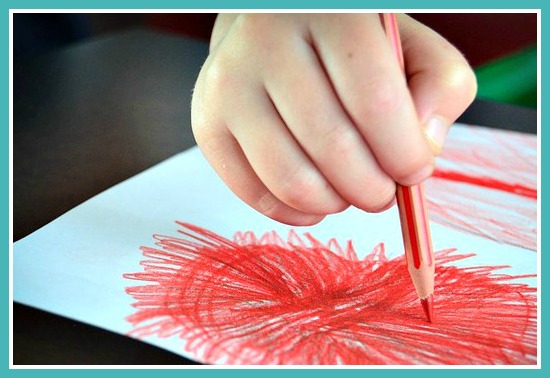
4. Be respectful of your child’s feelings.
Say something like, “I’m sorry I accidentally got rid of something you enjoyed. I did my absolute best in trying to organize your space for you to give you a fresh start. Tell me what you loved about that item.” Doing this will show you care about their feelings and it may help them let go of the item.
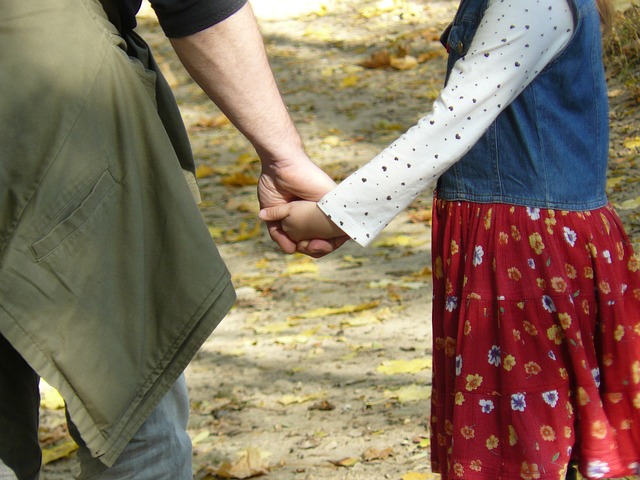
You May Also Enjoy:
- How to Organize School Papers and Other Mementos
- When Your House is Just too Small
- How I Decluttered My Entire House in Six Days
- 7 Simple Ways to Begin Living a Clutter-Free Life
Personal Thought/Application Question: What tips do you have for conquering kids’ clutter in a small space?
![]()
 Davonne Parks believes that your role at home is valuable and she wants to help you thrive in your environment. Click here to receive immediate access to the FREE printable library she created just for you.
Davonne Parks believes that your role at home is valuable and she wants to help you thrive in your environment. Click here to receive immediate access to the FREE printable library she created just for you.

